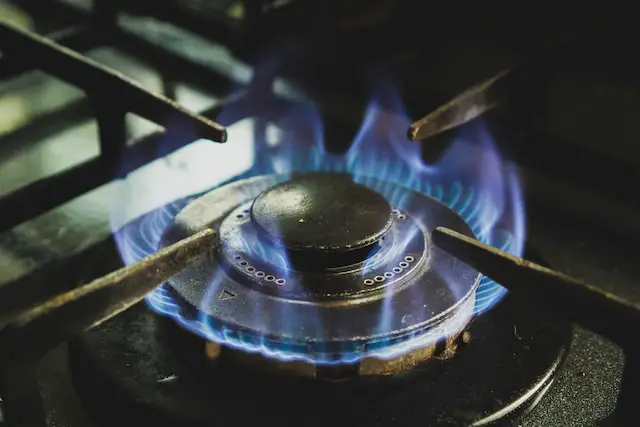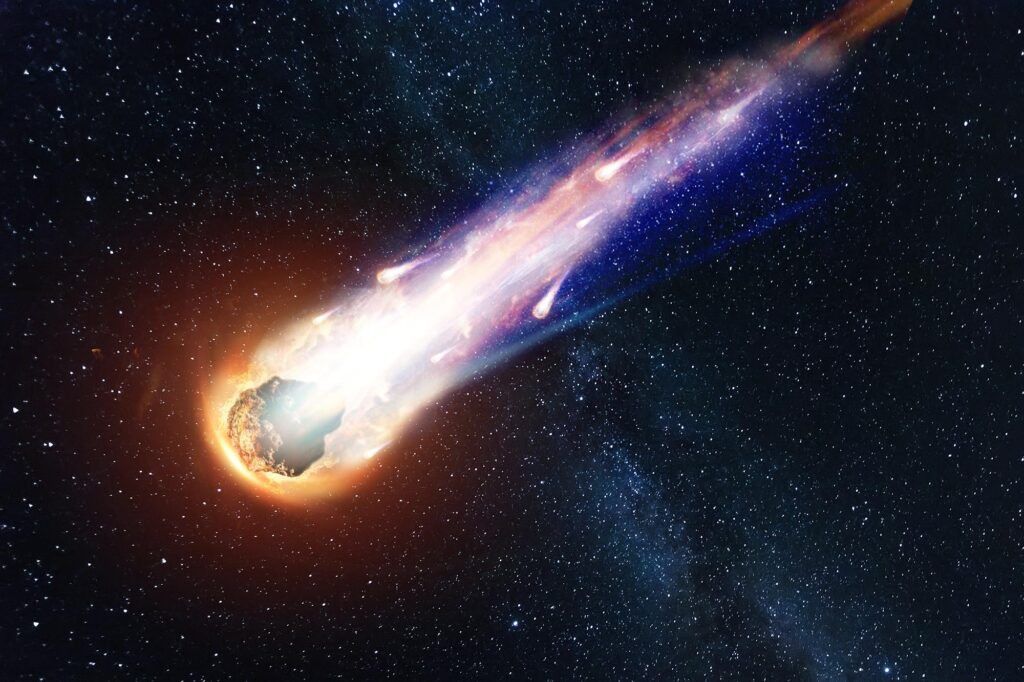Why Is Natural Gas So Expensive In California?
https://youtu.be/YiWC_DskOw0
California is home to some of the highest natural gas prices in the United States, and the cost continues to rise. Customers across the state have been experiencing high gas bills, which has raised questions about why natural gas is so expensive in California.
Several factors contribute to the high natural gas prices in California, including supply and demand, the state’s regulations, and the cost of transportation. Let’s take a closer look at these factors and explore why California residents are paying so much for natural gas.
Supply and Demand
One of the main reasons for high natural gas prices in California is supply and demand. California relies heavily on natural gas for electricity generation, and the state’s demand for natural gas is higher than its supply. This is due to several factors, including the growing population, the increased use of natural gas for power generation, and the state’s commitment to reducing greenhouse gas emissions.
The limited supply of natural gas in California means that the state has to import natural gas from other regions to meet its demand. This dependence on imports makes natural gas prices in California vulnerable to fluctuations in the global energy market. For example, natural disasters or pipeline disruptions in other parts of the country can drive up prices in California.
Regulations
Another contributing factor to high natural gas prices in California is the state’s regulations. The California Public Utilities Commission (CPUC) regulates natural gas prices in the state, and the regulations can make it difficult for natural gas providers to increase their supply to meet the demand.
Governor Gavin Newsom has expressed concerns about the rising cost of natural gas and has proposed a plan to address it. The plan includes setting new standards for reducing greenhouse gas emissions, increasing the use of renewable energy sources, and promoting energy efficiency.
Transportation Costs
Transportation costs are also a significant factor in the high cost of natural gas in California. Natural gas must be transported from production sites to power plants and homes, and the cost of transportation is included in the final price that customers pay. California’s location on the West Coast means that natural gas must be transported over long distances, which can drive up the cost.
In addition, natural gas must be processed before it can be transported, and this processing adds to the final cost. The cost of processing and transporting natural gas is especially high in Northern California, where the natural gas infrastructure is limited.
Recent Price Spikes
Recent price spikes in natural gas have also contributed to the high cost of natural gas in California. In January 2021, wholesale prices for natural gas spiked due to high demand during a cold snap, which led to increased prices for natural gas bills for customers of Pacific Gas and Electric (PG&E), San Diego Gas & Electric (SDG&E), and Southern California Gas (SoCalGas).
Federal investigators are currently investigating whether natural gas providers in California took advantage of the cold snap to increase prices. The Los Angeles Times reported that prices spiked more than 10 times their normal level during the cold snap, causing some customers to receive gas bills of more than $1,000.
Conclusion
In conclusion, natural gas is expensive in California due to a combination of factors, including supply and demand, regulations, transportation costs, and recent price spikes. While state officials are working to address the issue through regulations and the promotion of renewable energy sources, customers should expect to continue to see high natural gas bills in the short term.
To mitigate the impact of high natural gas bills, customers can take steps to increase their energy efficiency and reduce their overall usage. This can include installing energy-efficient appliances, insulating their homes, and adjusting their thermostats to conserve energy. By taking these steps, customers can reduce their natural gas bills and contribute to a more sustainable energy future.
Frequently Asked Questions
What is natural gas?
Natural gas is a fossil fuel that is primarily composed of methane, but it can also contain other hydrocarbons such as ethane, propane, butane, and pentane. It is formed by the decomposition of organic matter, such as dead plants and animals, over millions of years. Natural gas is a non-renewable resource and is often found in underground reservoirs or association with other fossil fuels, such as coal or oil. It is used as a source of energy for heating, cooking, and generating electricity, as well as in industrial processes and as a transportation fuel. Natural gas is often viewed as a cleaner-burning fossil fuel compared to coal and oil because it produces fewer emissions of air pollutants and greenhouse gases when burned.
Where does natural gas come from?
Natural gas is a fossil fuel that is formed deep beneath the Earth’s surface over millions of years from the remains of ancient plants and animals. It is typically found in underground rock formations or associated with other fossil fuels like coal or oil. Natural gas can be extracted through drilling or fracking techniques, where high-pressure water and chemicals are used to release gas trapped in rock formations. Once extracted, natural gas is processed and transported through pipelines to be used for heating, electricity generation, and other industrial purposes.
What does natural gas smell like?
Natural gas is an odorless and colorless gas. However, to help detect leaks, an odorant called mercaptan is added to natural gas, which gives it a distinctive, unpleasant smell similar to rotten eggs or sulfur. This odor is often described as being pungent and easily recognizable.
What is natural gas used for?
Natural gas is used for various purposes, including:
1. Heating: Natural gas is commonly used for home heating systems, as well as for heating water in residential and commercial buildings.
2. Cooking: Many stovetops, ovens, and grills are powered by natural gas, which is popular among chefs and homeowners alike for its quick and precise temperature control.
3. Electricity generation: Natural gas is often used to power turbines at power plants, which generate electricity for homes and businesses.
4. Industrial processes: Natural gas is used as a fuel and feedstock in a variety of industrial processes, including the production of chemicals, fertilizers, and plastics.
5. Transportation: Natural gas is used as a transportation fuel for vehicles such as buses and trucks. It is also used as a fuel for ships and trains.
6. Fuel for gas-powered appliances: Many appliances, such as clothes dryers and fireplaces, can run on natural gas.
Overall, natural gas is a versatile and important energy source that plays a critical role in powering our homes, businesses, and economy.
How is natural gas formed?
Natural gas is formed over millions of years by the decomposition and compression of organic matter found in sedimentary rocks. The organic matter, which is mainly composed of dead plants and animals, is buried under layers of sediment and subjected to high temperatures and pressure. This process of decomposition and compression over millions of years results in the formation of natural gas.
The primary component of natural gas is methane, which is a hydrocarbon gas that is lighter than air and has no color, taste, or odor. Other components of natural gas include ethane, propane, butane, and pentane, among others. Natural gas is usually found in pockets or reservoirs deep underground and is extracted using drilling techniques.
How is natural gas extracted?
Natural gas is extracted from underground reservoirs using drilling techniques. The process of extracting natural gas starts with drilling a well into the ground to reach the gas reservoir. Once the well has been drilled, a perforation gun is used to create small holes in the casing of the well, allowing the natural gas to flow into the wellbore.
After the gas flows into the well, it is then brought to the surface using pumps. At the surface, the natural gas is separated from any water or other substances that may have come up with it. This is done by using separators and filters that remove the impurities from the gas stream.
Once the gas has been separated from any impurities, it is transported through pipelines to processing plants where it is further refined and processed. The processing plants remove any remaining impurities, such as sulfur, and separate the natural gas into its components, such as methane, ethane, propane, and butane. These components can be used for different purposes, including heating homes, generating electricity, and powering vehicles.
How many jobs are available in natural gas distribution?
According to the Bureau of Labor Statistics (BLS), as of May 2020, there were approximately 50,040 people employed in natural gas distribution in the United States. This includes workers in a variety of positions such as gas plant operators, gas controllers, gas distribution workers, and more. The BLS predicts a decline in employment in this industry over the next decade due to factors such as automation and increased energy efficiency measures.
Where is natural gas found?
Natural gas can be found all over the world, both onshore and offshore. It is commonly found in sedimentary basins that are formed over millions of years from the accumulation of organic material, such as plants and animals. Natural gas reserves can be found in underground rock formations, coal seams, and in association with crude oil deposits. The largest reserves of natural gas are found in Russia, Iran, Qatar, and the United States.
What is natural gas made of?
Natural gas is primarily made up of methane, a simple chemical compound composed of one carbon atom and four hydrogen atoms (CH4). However, it can also contain other hydrocarbons, such as ethane, propane, butane, and pentane. Additionally, it can contain small amounts of impurities like water vapor, carbon dioxide, nitrogen, and hydrogen sulfide. The exact composition of natural gas varies depending on the location where it is found.
How is natural gas transported?
Natural gas is primarily transported through pipelines, which are made of steel and can span long distances across the country. The pipelines are typically buried underground, and the gas is transported under high pressure to maintain its fluidity. Compressor stations are located along the pipeline to maintain the pressure and push the gas along the pipeline.
In addition to pipelines, natural gas can also be transported in liquid form as liquefied natural gas (LNG). This involves cooling the gas to a temperature of -260°F, which causes it to condense into a liquid. The liquid form of natural gas takes up much less space than the gaseous form, making it easier to transport over long distances by ship, rail, or truck.
Transporting natural gas can be expensive, and the cost of transportation is often reflected in the price of natural gas. However, the efficiency of pipelines and the growing use of LNG technology have helped to reduce the cost of transporting natural gas in recent years.
What is the difference between natural gas and propane?
Natural gas and propane are both forms of fossil fuels used for heating and cooking, but they differ in several ways.
Firstly, natural gas is primarily composed of methane, while propane is mostly made up of propane molecules. This means that propane has a higher energy content and can produce more heat per unit of volume than natural gas.
Secondly, natural gas is delivered to homes and businesses through pipelines that are already in place, whereas propane is typically stored in tanks and delivered by trucks to individual homes or businesses. This makes natural gas more convenient for those who already have access to pipelines, while propane is more commonly used in rural areas where pipelines are not available.
Finally, the cost of natural gas and propane can vary depending on location and availability. In some areas, natural gas may be cheaper than propane, while in others, propane may be more affordable.
Overall, both natural gas and propane have their advantages and disadvantages depending on individual needs and circumstances.
Why are natural gas prices so high in the US?
There are several factors contributing to the high natural gas prices in the US. One of the main reasons is the increase in demand for natural gas due to the extreme weather conditions. The US experienced record-low temperatures during the winter of 2020-2021, which increased the demand for heating and electricity. The hot summer months also contribute to the high demand for natural gas to power air conditioning units.
Another factor contributing to the high natural gas prices is the decrease in natural gas production. The pandemic caused many natural gas producers to cut back on production, resulting in lower supplies. Additionally, the decrease in oil production also affects natural gas production since natural gas is often produced alongside oil.
Moreover, the increasing natural gas exports have caused a decline in domestic supplies. The US has been exporting liquefied natural gas (LNG) to other countries, such as Asia and Europe, which has created a global market for natural gas. This has caused domestic natural gas prices to rise as US suppliers compete with foreign buyers who are willing to pay more.
Finally, the recent cyberattack on the Colonial Pipeline has disrupted the natural gas supply chain, causing prices to spike. The pipeline carries natural gas to the East Coast, and the shutdown has caused a ripple effect throughout the supply chain, resulting in higher prices.
Overall, a combination of factors, including extreme weather conditions, decreased production, increasing exports, and supply chain disruptions, has contributed to the high natural gas prices in the US.
Which state has the most expensive gas?
As of May 2023, the state with the most expensive gas prices in the United States is Hawaii. According to AAA’s Daily Fuel Gauge Report, the average price of regular gasoline in Hawaii is around $4.40 per gallon, which is significantly higher than the national average of around $3.00 per gallon. Other states with high gas prices include California, Alaska, and Washington.
Why California gas prices are so high and vary so widely?
California gas prices are notoriously high and have been for many years, but why is this the case? Several factors contribute to the high and varying gas prices in California.
One of the main reasons is that California has some of the strictest environmental regulations in the country. These regulations require a special blend of gasoline that is more expensive to produce than the standard blend used in most other states. In addition, California has a cap-and-trade program that requires oil refineries and fuel importers to purchase allowances for the carbon emissions produced during the production and transportation of fuel. This program adds cost to fuel that is passed on to consumers.
Another factor is the state’s high taxes. California has one of the highest gas taxes in the country, with a combined state and federal tax of over 70 cents per gallon. This tax is used to fund road repairs, public transportation, and other infrastructure projects.
Additionally, California’s geographic location plays a role in the state’s gas prices. California relies heavily on imported oil, which is more expensive to transport to the West Coast. Furthermore, California’s market is more isolated than other states, which means that there is less competition among gas stations, and prices can vary widely depending on location and supply.
Finally, market speculation and refinery outages can also contribute to higher gas prices. Refinery outages or maintenance can disrupt the supply of gasoline, leading to higher prices at the pump. Additionally, market speculation can drive up prices, especially during times of heightened geopolitical tensions or other market disruptions.
Overall, the combination of strict environmental regulations, high taxes, reliance on imported oil, isolated markets, and market disruptions all contribute to the high and varying gas prices in California.













